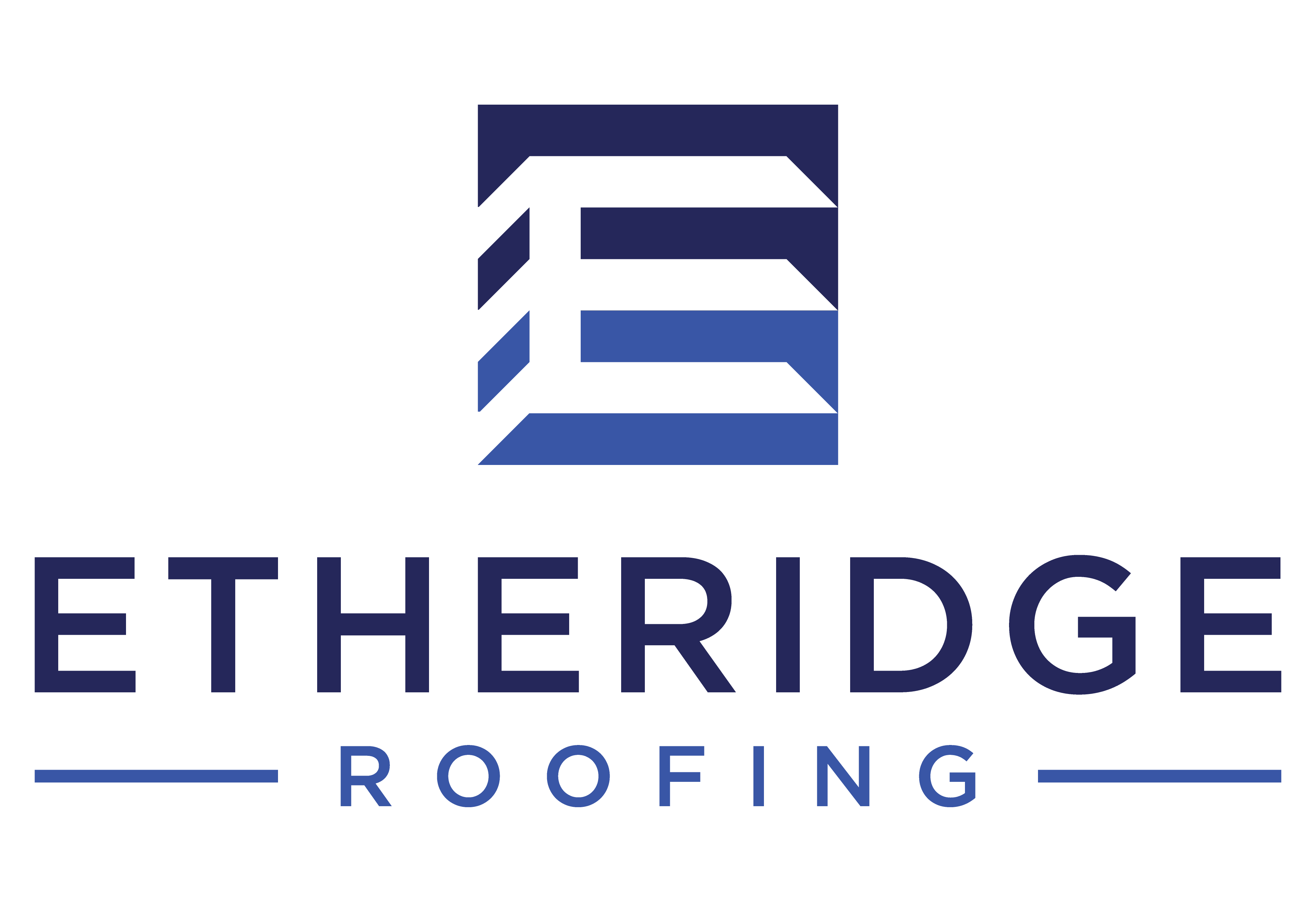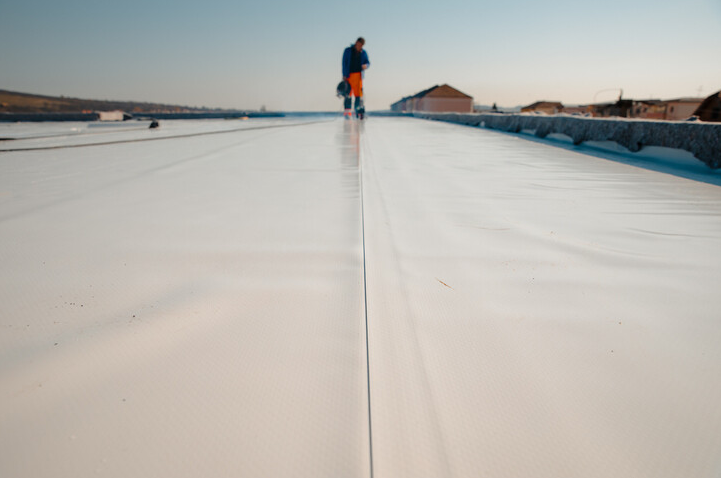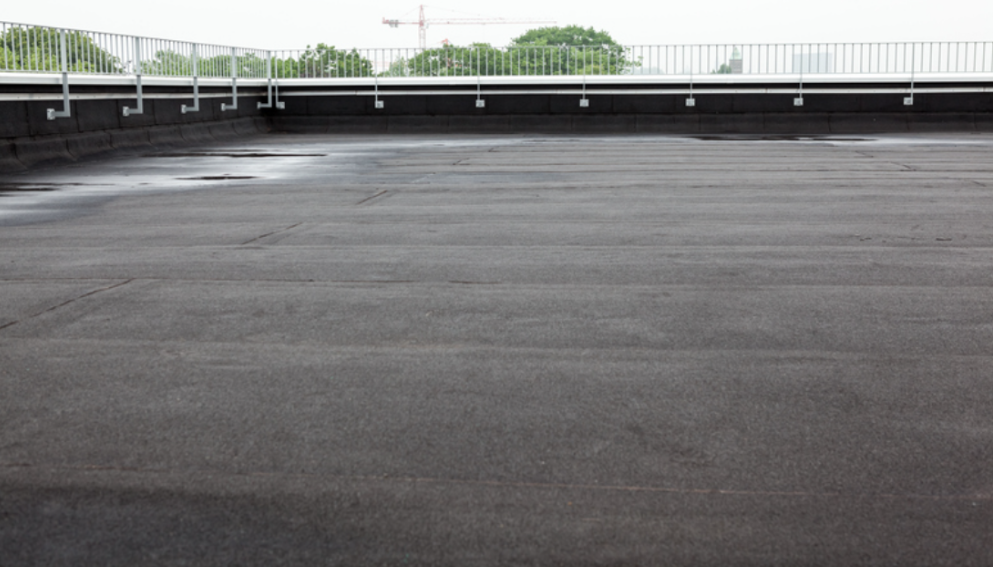Is Green Roofing a Viable Option for Your Commercial Flat Roof?
If you're looking for a green roofing solution for your commercial flat roof, you're not alone. Businesses across the country are increasingly turning to green roofing options to reduce their environmental impact while improving the look and energy efficiency of their building. However, green roofing is a complex process that requires the expertise of a professional roofing contractor. In this blog post, we'll take a look at the benefits of green roofing for commercial flat roofing and provide tips on how to find the right roofing contractor for the job.
What is green roofing?
Green roofing is a type of roofing system that incorporates living vegetation and vegetation layers into the roof structure. Instead of the typical flat roofing solutions, a green roof is designed to support the growth of plants, creating a sustainable roofing option for commercial buildings.
Green roofs can be installed on both new construction projects and existing buildings, providing numerous benefits for the environment, the building itself, and the surrounding community. By adding a layer of plants to your commercial flat roof, you can improve air quality, reduce stormwater runoff, mitigate the urban heat island effect, and even enhance biodiversity.
In addition to the environmental advantages, green roofing also offers benefits for building owners and occupants. These roofs act as a natural insulator, reducing energy consumption and improving the overall energy efficiency of the building. They can also extend the lifespan of the roof membrane by protecting it from UV radiation and extreme temperature fluctuations.
To create a successful green roof, various components are involved, including a waterproofing layer, drainage system, filter fabric, growing medium, and vegetation. These elements work together to ensure proper water retention, drainage, and plant growth.
Overall, green roofing is a sustainable and visually appealing solution for commercial flat roofs. It offers a range of benefits, from environmental to financial, making it an increasingly popular choice for businesses across the country. In the next section, we'll explore the specific advantages of green roofing for commercial buildings.
The benefits of green roofing for commercial buildings
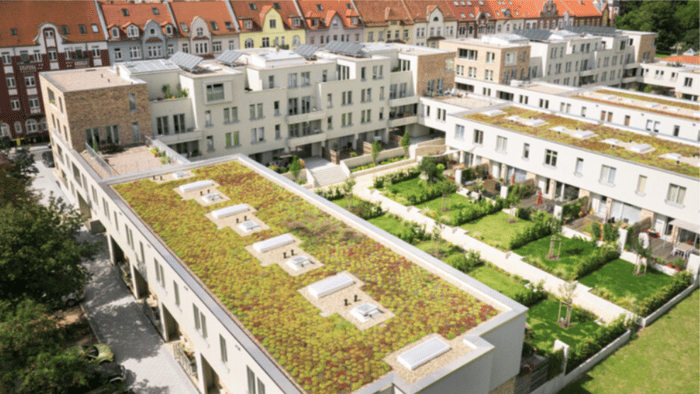
Green roofing offers a multitude of benefits for commercial buildings, making it a viable option for facility managers and contractors looking for sustainable roofing solutions. One of the key advantages is the positive impact on the environment. Green roofs help improve air quality by absorbing carbon dioxide and releasing oxygen. They also reduce stormwater runoff by absorbing rainwater and filtering out pollutants before they reach water bodies.
In addition to their environmental benefits, green roofs also provide advantages for the building itself. They act as a natural insulator, reducing energy consumption for heating and cooling. This can lead to significant cost savings on energy bills. The layer of plants on the roof also protects the roof membrane from UV radiation, extending its lifespan and reducing maintenance costs.
Green roofs can also enhance the overall aesthetics of the building. The lush greenery creates a visually appealing landscape that can improve the mood and well-being of building occupants. In urban areas, green roofs help mitigate the urban heat island effect, reducing the temperature in surrounding areas.
Moreover, green roofing contributes to biodiversity by providing a habitat for birds, insects, and other wildlife. This creates a more sustainable and balanced ecosystem within the urban environment.
Overall, the benefits of green roofing for commercial buildings are substantial. From environmental advantages to financial savings, this sustainable roofing solution is a wise choice for facility managers and contractors looking to make a positive impact on the environment while improving the efficiency and appeal of their buildings.
Factors to consider before installing a green roof
When considering installing a green roof on your commercial flat roof, there are several factors to take into account. First and foremost, you'll want to evaluate the structural capacity of your roof to determine if it can support the additional weight of a green roof system. This is especially important if you are retrofitting an existing building. It may be necessary to consult with a structural engineer to ensure that your roof can handle the load.
Another important factor to consider is the climate in which your building is located. Different types of plants thrive in different climates, so you'll want to select vegetation that is well-suited to your region. Additionally, consider the exposure of your roof to sunlight and wind, as these factors can impact the viability of certain plant species.
Maintenance is another key consideration. While green roofs are generally low-maintenance, they still require regular upkeep to ensure their longevity. This can include tasks such as weeding, fertilizing, and pruning. Consider if you have the resources or are willing to hire a professional to perform these tasks on a regular basis.
Lastly, think about the intended use of your green roof. Will it be accessible to building occupants or purely decorative? This will influence the design and features of the green roof, such as walkways, seating areas, and irrigation systems.
Taking all of these factors into consideration will help you determine if a green roof is a viable option for your commercial flat roof. Remember to consult with a professional roofing contractor who specializes in green roofing to ensure the success of your project.
Cost considerations of green roofing
When considering green roofing for your commercial flat roof, it's important to factor in the cost implications. While green roofing offers numerous benefits, it's essential to understand the upfront and long-term costs involved.
One of the primary cost considerations is the installation itself. Green roofing systems can be more expensive upfront compared to traditional flat roofing solutions. The additional components, such as waterproofing, drainage systems, and vegetation layers, contribute to the higher cost. However, it's crucial to remember that green roofs can provide significant long-term savings in terms of energy efficiency and maintenance.
Another cost consideration is ongoing maintenance. While green roofs are generally low-maintenance, they still require regular care to ensure their longevity. This includes tasks such as weeding, fertilizing, and pruning. Depending on the size of your green roof, you may need to allocate resources or hire professionals to handle these maintenance requirements.
Additionally, it's important to factor in the potential savings from energy efficiency. Green roofs act as natural insulators, reducing the need for heating and cooling. This can result in lower energy bills over time, offsetting the initial installation costs.
It's also worth exploring any potential financial incentives or rebates available for installing green roofs. Many local governments and organizations offer grants or tax incentives to promote sustainable practices. Researching these opportunities can help offset some of the upfront costs.
Ultimately, while green roofing may have higher upfront costs compared to traditional flat roofing solutions, the long-term benefits in terms of energy savings and environmental impact can make it a financially viable option for commercial buildings. Proper planning, budgeting, and exploring available incentives will ensure that the cost of green roofing aligns with your facility's long-term goals.
Maintenance requirements of a green roof
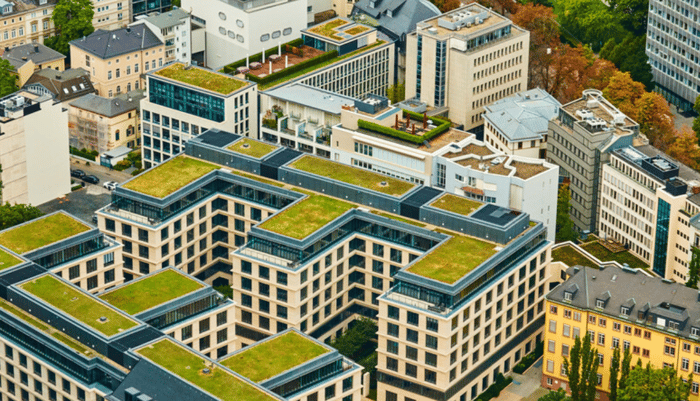
Maintaining a green roof is crucial to ensure its longevity and optimal performance. While green roofs are generally low-maintenance compared to traditional roofing systems, they still require regular care and attention. This includes tasks such as weeding, fertilizing, and pruning.
Weeding is an important part of green roof maintenance as it helps prevent the growth of unwanted vegetation that can compete with the plants on your roof. Regularly inspecting your green roof for any weeds and promptly removing them will help ensure the health and growth of your desired plants.
Fertilizing is another essential aspect of green roof maintenance. Providing your plants with the necessary nutrients will promote their growth and vitality. Consult with a professional horticulturist or landscape contractor to determine the appropriate type and frequency of fertilization for your specific plant species.
Pruning is important to maintain the desired shape and size of your plants. Trimming any overgrown or damaged branches will help improve the aesthetics of your green roof and prevent potential hazards.
Regular inspections are also crucial to identify any potential issues or areas that require maintenance. This can include checking for signs of damage or leaks, ensuring proper drainage, and evaluating the overall health of your plants.
Additionally, it's important to consider the irrigation needs of your green roof. Depending on the climate and rainfall in your area, you may need to supplement the natural water supply with irrigation. Regularly monitoring and adjusting your irrigation system will help ensure your plants receive the appropriate amount of water.
While maintenance tasks may vary depending on the specific design and plants on your green roof, it's essential to develop a regular maintenance plan to keep your roof in optimal condition. Consider hiring a professional green roof maintenance company to assist with these tasks if you don't have the resources or expertise to handle them yourself.
By prioritizing regular maintenance, you can maximize the lifespan of your green roof and continue to enjoy its numerous benefits for years to come.
Success stories of green roofing on commercial flat roofs
Commercial buildings across the country have embraced green roofing, and the success stories are impressive. These stories highlight the benefits of green roofing and the positive impact it has had on various businesses.
One success story comes from a hotel in a busy urban area. By installing a green roof, the hotel was able to create a beautiful rooftop oasis for their guests. The lush vegetation and serene atmosphere not only provided a unique experience for guests but also improved the overall aesthetic of the hotel. The green roof also acted as a natural insulator, reducing the need for air conditioning during the hot summer months, resulting in significant energy savings.
Another success story comes from an office building that implemented a green roof to reduce stormwater runoff. The building had previously experienced issues with flooding during heavy rainfalls, but the green roof effectively absorbed rainwater and reduced the strain on the local drainage system. This not only saved the building owner from costly repairs but also helped alleviate flooding concerns in the surrounding community.
In yet another success story, a retail center installed a green roof to create an eco-friendly and sustainable shopping experience. The vibrant greenery on the roof attracted customers and created a positive atmosphere. The retail center also saw an increase in foot traffic and sales, as customers were drawn to the unique and environmentally conscious design.
These success stories demonstrate the wide range of benefits that green roofing can bring to commercial buildings. From improving energy efficiency to creating visually appealing spaces, green roofs have proven to be a valuable investment for businesses across various industries. Whether it's a hotel, office building, or retail center, green roofing offers a viable option for enhancing the functionality, aesthetics, and sustainability of commercial flat roofs.
Conclusion

In conclusion, green roofing is a highly viable option for commercial flat roofs. It offers a range of benefits that make it an attractive choice for facility managers and contractors looking for sustainable roofing solutions. Green roofs provide environmental advantages, such as improving air quality, reducing stormwater runoff, and mitigating the urban heat island effect. They also offer benefits for the building itself, such as natural insulation, extended roof membrane lifespan, and enhanced aesthetics.
Before installing a green roof, it's important to consider factors such as the structural capacity of the roof, climate, maintenance requirements, and intended use of the roof. While green roofing may have higher upfront costs, it can provide long-term savings through energy efficiency and potential financial incentives.
Maintenance requirements for green roofs include regular weeding, fertilizing, pruning, and inspections. By prioritizing regular maintenance, you can ensure the longevity of your green roof and continue to enjoy its numerous benefits.
Successful stories of green roofing in commercial buildings demonstrate the positive impact it has had on businesses across various industries, including hotels, office buildings, and retail centers.
Overall, green roofing is a sustainable and visually appealing solution that can improve the efficiency and appeal of commercial flat roofs while reducing environmental impact. Consider consulting with a professional roofing contractor who specializes in green roofing to determine if it is the right option for your facility.
Posts by Tag
Recent Posts
Popular Posts
Selecting the appropriate roofing system is...
If you're looking for a green roofing solution...
Your roof is one of the most important parts of...
Recent Posts
With so many options available in the world of...
Understanding the signs of wear, evaluating the...
